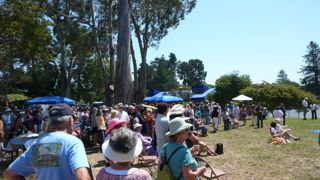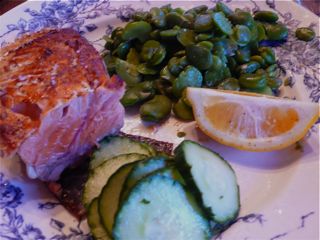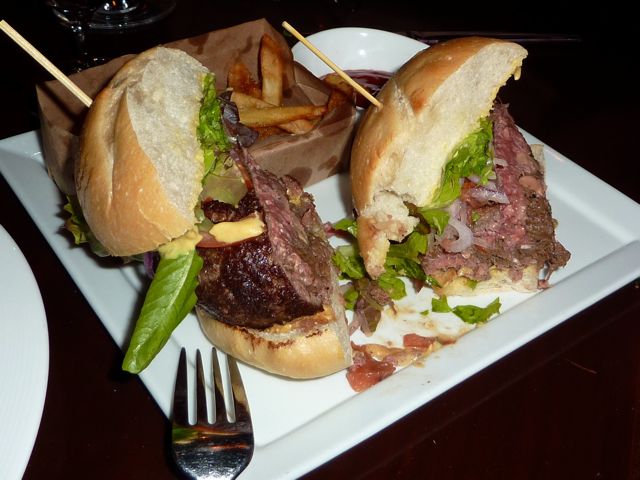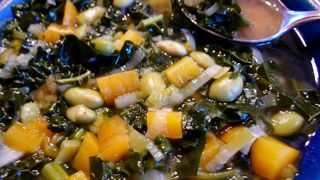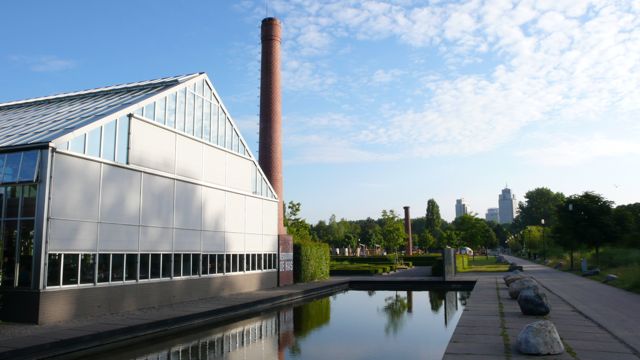Rien, Friesland, Netherlands, May 31, 2009—
DEEP-FRIED FOODS are a staple of nearly every nation's cuisine, the Netherlands not excepted. Kees Elfring, a serious chef whose credentials include two stints at Chez Panisse and two highly regarded restaurants of his own (and who is a dear friend of mine and almost a member of the family), has been thinking about how he might influence the Dutch fondness for
frituur, leading it to a possibly more healthful and certainly more interesting level while retaining its simplicity and gratification.
To that end he organized the Third Annual Friture Conference in this small town in Friesland where he has lived a number of years. The town's so small it has no commercial buildings at all: no bar or café, no restaurant, no grocery shop, no hotel. There isn't even a church: locals walk across the fields half a mile or so to the nearby Ytterien (?) when the clerical mood strikes — or to be buried in its tiny cemetery.
Few of us thought of Last Things during the conference, which began with the registration of perhaps forty or fifty attendees and a short social hour. During this,
1: Fried root vegetables (beet, parsnip, celeriac, sweet potato) with goat cheese; Olives stuffed with veal and…; Noah Tucker, cook
Vin de Cevennes: flinty, austere, Rhone white style
Cotes de Provence: full, fruit, Malvasie from Fréjus
This was followed by a short introduction to the friture street food of a wholly different cuisine, the deep-fried
panipuli ("water-breads") of India: Debra Solomon [coolieblog.com] recounted the preparation and, most important, eating of these apparently sensually delicious items, illustrating her remarks with arresting photos.
Then Cynthia Hathaway presented a photo-lecture on friture and architecture, touching on an extensive bibliography (and specifically two photo-books:
Mobile Fritures;
London Cafs) while showing images of friture-stands through the decades. Many of these of course are mobile; others are simple stationary affairs. What constant threads run through this commercial architecture and design, making deep-fried cuisine so appealing, so commercially successful?
Clearly part of this conference's
raison d'etre is consumer research for possible Kees Elfring project. Attendees were provided with clipboards with a survey to respond to, and Kees asked us to taste and discuss seriously, take notes, then have fun. And then we moved outside to a series of frying-stations for
The tastes:2: Halibut with Japanese style dried anchovies; Robert Kranenborg, cook; the anchovies wrapped in onions, pickled sweet-sour asparagus on the side
Sancerre: excellent with the halibut
3: Fritto Misto di Pesce; Leonardo Pacenti, cook which I did not taste but which acc. Lindsey was in agliata sauce: dried tomatoes, garlic, parsley
4: Sweetbreads with Ravigote Sauce; Pieter Damen, cook
Montlouis, perfect match with the sweetbreads
Cabernet de Saumur (Cabernet franc), less interesting, not standing up to the frites
5: Squash Blossoms stuffed with Ricotta and Mint; Sander Overeinder, cook
Les Resiers Chenin Blanc, grapy, forward
Geodais Rhone, oil, edge, backward
6 (a last-minute improvised addition): Elderflower fritters with ice cream; Sander Overeinder)
The wines were provided by
de Vier Heemskinderen. I wish I could tell you more here about them; fries, sauces, two wineglasses, and clipboard made the taking of notes difficult. I hope for an e-mail from the Heemskinderen with a complete list of the wines, which were really quite remarkable.
Those who understand spoken Dutch will enjoy a short video of the Friture Conference at
FoodTube.

